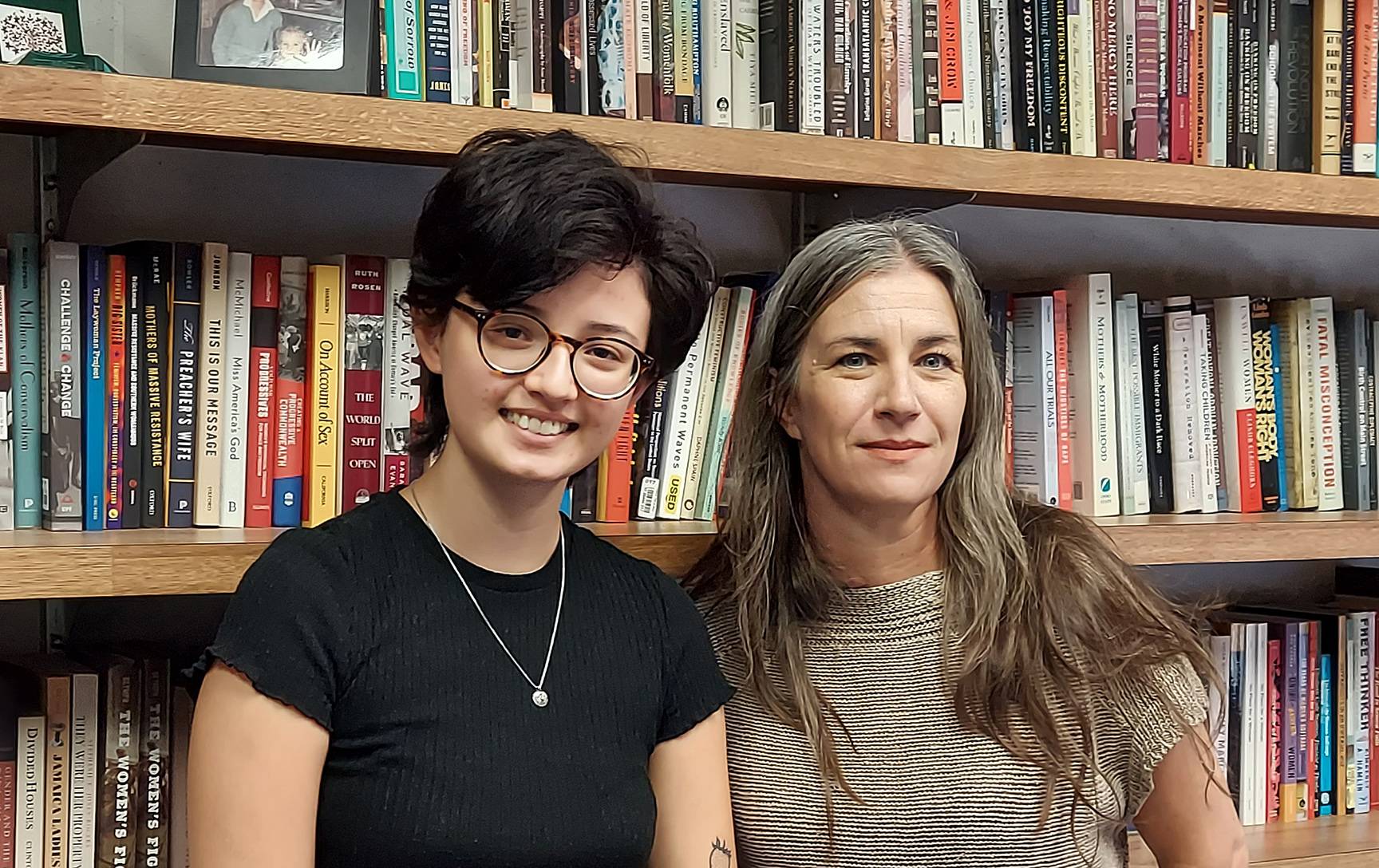Julie Cooper | October 10, 2022

Áhn Adams is a senior history and geography major who found a mentor in Jessica Pliley, professor of the History of Women, Gender, and Sexualities and the interim director of Women’s and Gender Studies at Texas State University.
Adams was part of a panel sponsored by the IDEA Center (Innovation, Discovery, Exploration, and Analysis). She was asked to speak about doing research and working with faculty after she won first place and $1,000 in the College of Liberal Arts Undergraduate Research Expo.
“My research interests include women’s history and the history of gender and sexuality. In ‘Women’s History since 1877’ taught by my mentor, Dr. Pliley, I produced my project, ‘At Home, At War: Policing Women’s Sexuality in Texas.’ It focuses on women’s turbulent experience on the home front during World War I,” Adams said.
The environment that comes to mind when most people think of “research” tends to be a high-tech laboratory associated with STEM fields, but Adams said her research took place in the libraries and archives. Her interest in research and her career aspirations to become a history professor came about because of Pliley’s classes. “I think of Dr. Pliley as a very important mentor,” Adams said.
“I’ve worked with a lot of students and Áhn is unique,” Pliley said. “She is very self-directed. She is not overly cautious. She is willing to try new things and to do the background work. She has developed her own project with me. It helps that her research intersects with mine.”
Pliley describes Adams as hard working, courageous, and dynamic. “She is learning something that I learned actually late. There is a certain type of success that begets success. That you can create momentum and if you’re really savvy and smart about carving a project up -- then doing the presentation on one part of it, and then committing to a presentation on the other part of it. Over time, you end up developing an entire project. Adams seems to have learned that skill. It’s a networking skill. It’s a resume-building skill as much as it is a research skill.”
Pliley said research is often an opportunity for students to develop a project that can grow into an Honors or a graduate thesis. Students, she said, should not be shy about asking really basic questions. The professor shared a handful of traits and qualities she likes to see in students who want to tackle research:
“Take the initiative. Ask questions, be curious. There are no stupid questions! Be independent. They need to put in the work. So, if I suggest, ‘hey read this article,’ you should look at the article, respond to it, and take notes on it.”
“One of the things that I would tell students if they really want to do research with a professor is – there are ways that they can sign up to do independent studies with that professor, which is essentially like a lab,” Pliley said. Although most of her work has been with graduate students, she added, “I feel lately my personal interest has turned toward undergraduate research opportunities.”
“For students who are interested in doing research, it is not as scary as it sounds. Professors are very willing and very excited to help students lead research. Just reach out to the professor – that is a good first step and in my experience, very successful.”
Adams, as a double major, is currently working on a paper with Sarah Blue, associate professor in the Department of Geography. This timely work focuses on unaccompanied minors at the U.S.-Mexico border. Adams hopes to continue her education in a history Ph.D. program.
Share this article
For more information, contact University Communications:Jayme Blaschke, 512-245-2555 Sandy Pantlik, 512-245-2922 |
